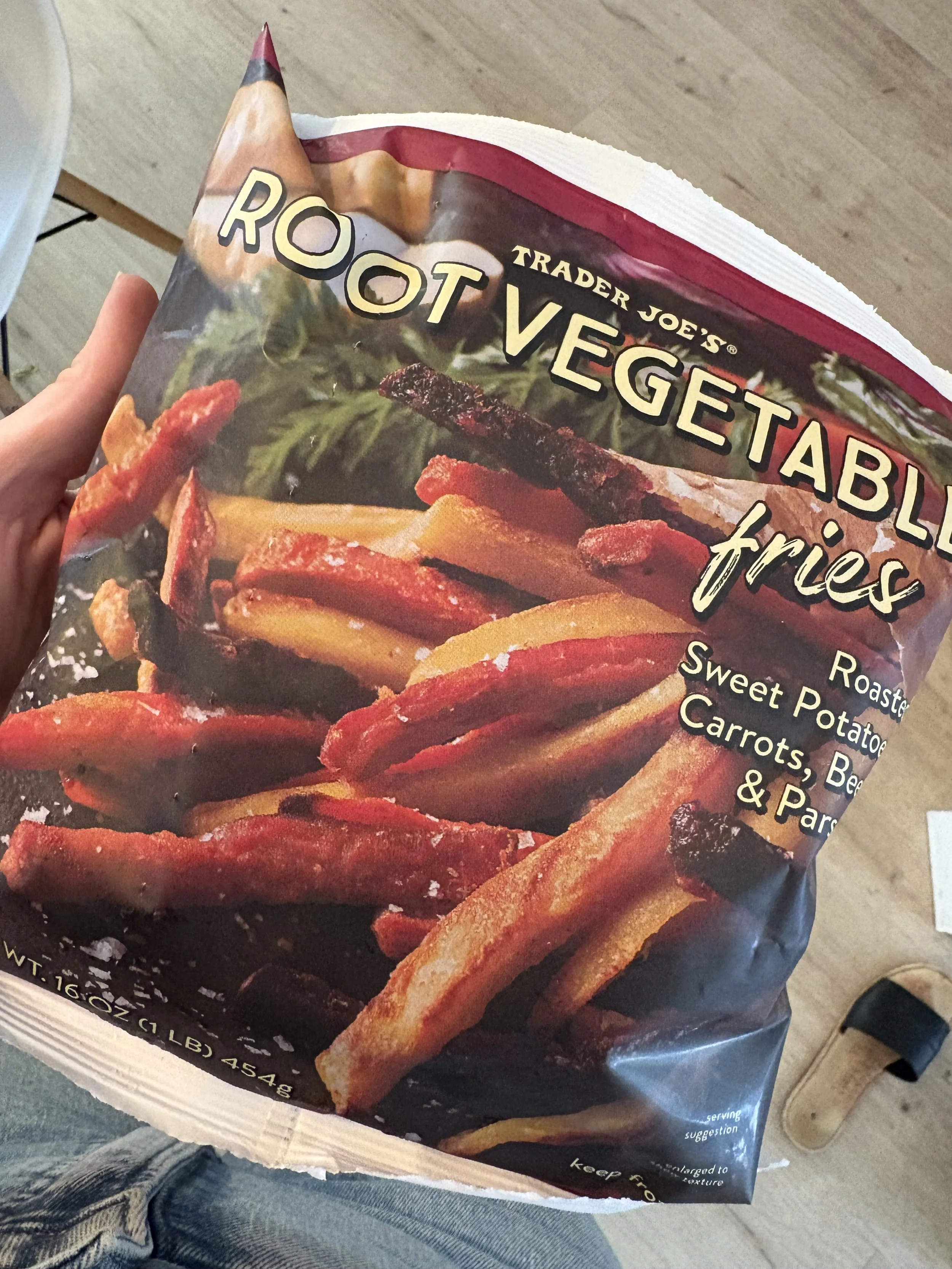Save Money on Food in 2024
Rising grocery costs got you stressed?
Here are my favorite ways to save money, while prioritizing nutrient-dense, whole foods.
I feel like over the last year I have been hearing a common complaint from friends, family, and clients— groceries are expensive. And they’re not wrong. According to the Bureau of Labor Statistics, in the last few years store-bought food increased over 23%.
And when you are trying to prioritize high-quality, nourishing foods, it can feel like even more of a challenge.
So I wanted to create a resource of tangible, cost-effective ways to nourish your family.
Saving Money on Food in 2024
A lot of people think of extreme couponing when they think of saving money on food. But unfortunately, a lot of those coupons are on highly processed foods that don’t include a whole lot of nutrients. The good news is there are a lot of other ways that you can save money on nutrient-dense foods! Here are some of the things I actually do to buy healthy foods more affordably.
Purchase in Season
Not only are in season fruits and vegetables more affordable, but they are more nutritious!
PRO TIP: if you want to level this up, check out foraging opportunities in your area. This is something I want to do more of this year. Just search “foraging in my area” and you should find some options! There is even a facebook group in my local area that shares places you can forage.
Use a Shopping List
Meal plan and write a corresponding shopping list. This prevents you from shopping and getting a lot of “random” things, or stuff that you dont have an intentional plan for.
Rotate Meals
This is similar to the last point of using a meal plan, but this takes it one step further. Pick 6-10 recipes that your family loves (we personally rotate 7 meals for dinner). We dont always have them on specific days, or in the same order, but every week we eat the same dinners. This makes it easy to have the right ingredients on hand but also it saves us money!
That is because we use everything and dont have anything going to waste. Sometimes when I try a new recipe, i’ll have one or two random things- a new spice, or sauce, or something we dont regularly use. I find that those are the ingredients that end up going bad and we have to toss.
Rotating meals regularly keeps you using everything that you purchase. Less waste = less money thrown out.
Ditch the Delivery
Working with clients, I hear a lot that sometimes getting dinner delivered is just easy and convenient. And I hear you- especially when you are in a busy season, sometimes you just need those no-prep, no clean up kinda meals. But the problem with delivery (aside from them not being the most healthy option) is that it is stinkin’ expensive.
If you are wanting something quick and easy, I like having Kevin’s Natural Foods meals on hand. They are a much better option for convenience. I usually purchase them off Thrive Market while they are sale and stock a few in my freezer. Typically, i’ll add some veggies and rice to the protein and it’s perfect to feed my whole family (two adults and a toddler).
Related Reads:
My Thrive Market Shopping List
Buy in Bulk
When there are great sales on our staple items, i stock up. Some things I KNOW we will consistently use are:
rice - cook this in bone broth for extra nutrients!
flour - we use sourdough for all of our baked items
meat- the last several years we have bought beef and pork from a local farm and it’s a lot more affordable in the long run (although it is a bigger cost initially)
Make use of scraps
Here are some of my favorite ways to reduce waste:
meat bones- I will throw these in a freezer bag until I have enough to make a batch of bone broth
veggies scraps- if I have scraps of veggies, or ones that are wilted and about to go bad, I will throw these in a freezer bag as well to add to bone broth (if they are scraps i can’t use in broth, i’ll use for compost)
DIY
Over the last year I have really fallen in love with the process of baking sourdough. Not only is it a lot more nutritious option for bread, but it is sooo much more affordable. I have also started fermenting veggies- saurkraut, pickles, salsa 👏 it is all stuff I make from things I grow in my garden.
Speaking of gardening…
growing a garden can be a great way to save money on produce. But I know people that spend hundreds and hundreds of dollars every year growing a garden- fancy garden boxes and heirloom seeds and all sorts of fancy tools. This past year I made a goal of growing a garden for free. Here’s how I did it:
take advantage of seed libraries- search for free garden seeds in your area or local seed libraries
DIY compost- no need to spend hundreds of dollars on your soil or on fertilizers when you can make use of produce scraps that you are already paying for
trade with your friends- no need to grow 15 different varieties of things. Instead, get with a group of friends and strategically plan to grow and swap with one another!
Use grocery pickup options
Since having kids, I have used grocery pickup a lot more consistently! It keeps me from buying random extras, and I can take advantage of online coupons and digital savings through my grocery store. Plus, I save so much time (and it is so convenient especially if you have young children).
Online grocery stores
I have written before about my favorite online grocery stores and how we have saved a lot of money through Thrive Market! Their membership is fully gauranteed- meaning that if you do not save at least the cost of your membership, you’ll get it back in credit for your next order.
Choose food > supplements
Supplements can be a huuuge expense. And many times they are based on nutrients that you can get from whole foods. Taking collagen and gelatin? Eat more gelatinous cuts of meat (they are often more affordable cuts too). Protein powder? Prioritize lean cuts of meat. Green vegetable powder? Eat more leafy greens. While oftentimes these supplements are purchased for convenience, that comes at an added cost.
There you have it! Some of my favorite ways to make my grocery bill more affordable while still prioritizing nourishment and holistic wellness for me and my family. What are your favorite ways to save money on groceries?
-Kaelyn
















What if meal prepping didn’t have to be elaborate meals and hours of work? What if instead it was simple and sustainable and helped set your family up for success? i got you!